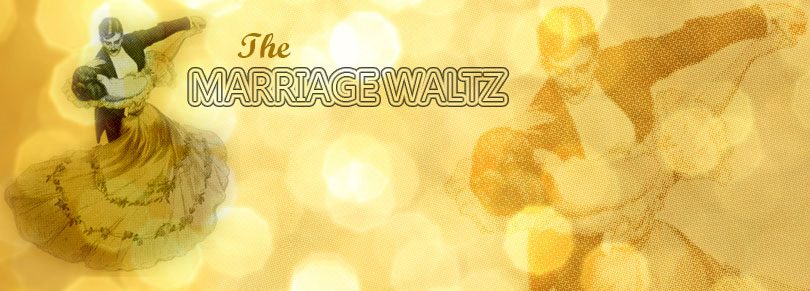Sometimes I walk into my daughters’ room and catch them playing house with each other. Usually one of them dresses like the mom, and another like the dad, and sometimes there’s a baby too. It’s always very cute to watch, but there’s something quite profound to the nature of how they play. As they play, I see them re-enact the “dance of married life” that they observe their parents doing. As they’ve watched mom and dad, for better or worse, they’ve observed how we fight, how we love each other, and how we parent, and now they practise and play the dance that they’ve seen.
While two distinct individuals joining together in a marriage relationship holds the promise of exceeding joy and potential for growth, it will also be the union of inevitable baggage, fears, hurts, and insecurities. And so, consequently, conflict ensues. As my wife and I have learned to live and love together, we’ve been fortunate enough to be helped by those older than us on the marriage journey, pointing us to what I call, the marriage waltz. The waltz is a beautiful, three-step dance between a man and a woman that can be hard to learn, but once you learn it is exceedingly graceful and beautiful to watch. Dealing with conflict in your marriage might also seem awkward and hard to learn at first, but as you practice these three steps, you and your spouse’s marriage will grow in beauty.
Love Selflessly
The biggest misconception about love is that it’s primarily a feeling. In reality, love is primarily something you do. In marriage, each day you have a new opportunity to wake up next to the person you’ve committed your life to, and make the conscious choice to love the other. Love, at its essence, is selflessness. It regards the other’s needs, wants, rights, and life above your own. In being selfless, it’s also sacrificial. It involves sacrificing personal fulfillment for the other person’s.
 But when I read and hear what true love is, I can’t help but consider how far I fall short! In my marriage I tend to be the opposite of selfless. I am often impatient with my wife. I am often arrogant or rude. I am even irritable towards those I love. I look out for my own interests above hers. I tend to want my own good above my wife’s or kids’. I tend to try to exercise my own rights at the expense of others, seek my own comfort above others, and assert my will above everyone else’s! I know I fail at these things; we all do! So how do we learn and practice selfless love?
But when I read and hear what true love is, I can’t help but consider how far I fall short! In my marriage I tend to be the opposite of selfless. I am often impatient with my wife. I am often arrogant or rude. I am even irritable towards those I love. I look out for my own interests above hers. I tend to want my own good above my wife’s or kids’. I tend to try to exercise my own rights at the expense of others, seek my own comfort above others, and assert my will above everyone else’s! I know I fail at these things; we all do! So how do we learn and practice selfless love?
Confess Boldly
A number of years ago, in response to a question posed by a newspaper editor, the British journalist G.K.Chesterton penned one of the shortest letters to the editor ever written. The Times of London had asked the question, ‘What is wrong with the world?’ to which Chesterton wrote: ‘Dear Sir, I am. Yours Sincerely, GK Chesterton’.
What does that have to do with marriage? What GK Chesterton understood is true for all of us: we tend to think that problems—evil, and anger—are all outside of us, that my spouse is the problem. But what Chesterton is saying is that it starts with me. True change in the world starts with the realization that I need to change first. So many relationships that start off beautifully end before the couple learns to utter the most important, yet difficult, 4 words in a relationship. These four words are: “I was wrong, dear.” While confessing boldly isn’t less than admitting that you’re wrong, it’s also significantly more than that. It also means that you take responsibility, not for changing the other, but for seeking to change yourself first. Most of us come to marriage desiring or in some way aspiring to change the other to our liking. This is an exercise in futility. It will only succeed in frustrating you more. Seek first to work on your own weaknesses, to be open about the areas you want to grow in, and lead your spouse to consider doing the same. When you can openly dialogue about areas you need to work on and confess your inabilities to measure up, it makes change not only safe, but possible.
Forgive Persistently
The German author Dietrich Bonhoeffer once wrote to a young newly married couple challenging them, saying: “live together in the forgiveness of your sins, for without it no human fellowship, least of all a marriage, can survive.” Forgiveness is not easy especially when we’re hurt. And because in marriage you love each other so deeply, you have the power to hurt each other more than anyone else can. And you will. True forgiveness doesn’t mean simply overlooking offenses, but loving the other even when they wrong you. It means truly embracing your husband when he sincerely says, “I was wrong, dear.” It means accepting your wife when she confesses for getting angry at you and not keeping a record of offenses. Without the practice of forgiving, a marriage relationship cannot truly survive or expect to be healthy.
Marriage is a beautiful institution but it is incredibly hard also. It is hard because you move from living for yourself to living for the other and whenever there is movement there is friction. However, I believe that as you practice the waltz in your married life, as friction and conflict arise, as you learn the pattern of life together, you can truly change and grow in learning how to love selflessly, confess boldly, and forgive persistently. I truly believe that this dance practised in your marriage will serve to bring greater joy to you, your children, and to the world around you.







adult online https://jewish-dating-online.net/
daiting online https://freewebdating.net/
buy coursework online https://courseworkdomau.com/
database coursework https://buycoursework.org/
coursework support https://teachingcoursework.com/
coursework resources https://coursework-expert.com/
coursework research https://courseworkdownloads.com/
coursework writers https://mycourseworkhelp.net/
creative writing coursework ideas https://writingacoursework.com/
help with coursework https://courseworkninja.com/
design and technology gcse coursework https://brainycoursework.com/
3because
write my papers discount code https://studentpaperhelp.com/
college paper help https://ypaywallpapers.com/
can you write my paper https://premiumpapershelp.com/
i will pay you to write my paper https://papercranewritingservices.com/
custom written college papers https://essaybuypaper.com/
custom paper writing service https://writemypaperquick.com/
cheap custom written papers https://mypaperwritinghelp.com/
pay for a paper https://buyessaypaperz.com/
cheapest paper writing service https://writingpaperservice.net/
order custom papers https://researchpaperswriting.org/
pay to do my paper https://doyourpapersonline.com/
customized paper https://write-my-paper-for-me.org/
professional paper writer https://writepapersformoney.com/
need help write my paper https://uktermpaperwriters.com/
purchase college papers https://sociologypapershelp.com/
buy writing paper https://term-paper-help.org/
chat gay en espanol gratis https://gaymanchatrooms.com/